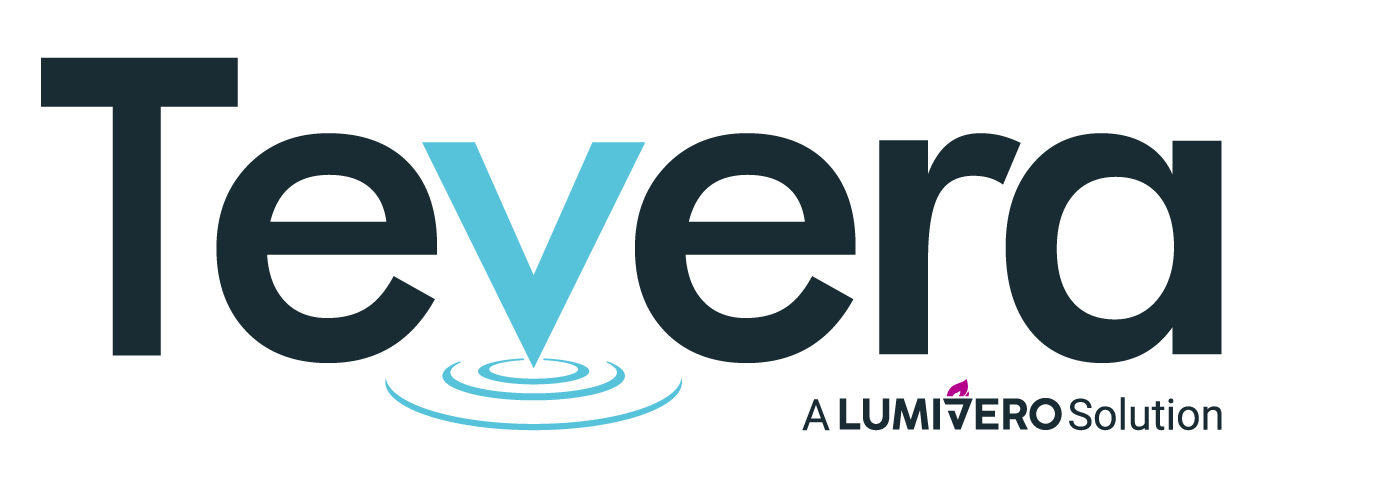Keep Your Social Work and Counseling Programs Competitive
Higher education is changing faster than ever and understanding student expectations will help set your program up for success. From achieving accreditation to offering online programs, schools must manage their brand reputation and continually innovate to stay competitive and attract students. One of the best ways to innovate and enhance your program’s reputation, and add value to your student experience, is to use the latest digital tools without breaking the bank.
What Students Want in 2020
Today’s students want to know they’re getting more from their tuition than a diploma. They want to know their career will make a difference and they want a return on their investment. Some would-be bachelor’s and master’s students are opting out of school altogether, citing debt and career prospects as their top concerns.
The good news for social work and counseling programs is that the job market is hot! From 2014 to 2024, the number of social work jobs is expected to grow 12%. From 2018 to 2028, the number of counseling jobs is expected to grow 22%. Both rates are faster than the average for most other jobs. But, this bright future doesn’t mean that programs can get complacent.
It’s imperative that programs demonstrate to current and prospective students that you’re they’re investing in their careers. To paraphrase Aristotle, “tell your students what you’re going to teach them, then teach them, then tell them what you taught them.” Tell prospective students how they’re going to benefit from your program by highlighting your gainful employment stats and the difference they’ll make in others’ lives as a social worker or counselor through real stories from your alumni. Then, as students, teach them exactly what they’ll need to know in the field. When they’re close to graduating, show them again how you prepared them by pointing to concrete examples like how the time tracking tool they used in their field placement is exactly like what they’ll use for submitting billable hours.
Showing students that your program offers tools and resources to help them graduate and achieve gainful employment, will bolster enrollment and prove to your students that you are investing in their futures.
Show Students How Your Program Invests in Their Careers
Here are five ways to engage prospective and current students and make your program stand out from the rest. Be sure to articulate to your students what the benefit is to reap the rewards of your investment in their futures.
1: Offer flexible courses
Students want the flexibility that online courses can offer. Not only are they used to digitally interacting with peers and colleagues but many would be unable to enroll in a social work/counseling program if they didn’t have the option to do their coursework on their own time. In fact, more than 70% of just undergraduate students are working at least part-time while attending school.
As the cost of higher education rises, students will begin demanding even more flexibility in how they learn. They may be raising a family, working a full-time job, or both while going to school. Prove to them that you support their career goals by helping them fit their education around their hectic lives. As of 2018, one-third of students were taking at least one online course and the trend is likely to continue. Like it or not, online education is the future of education. To stay competitive, consider adding online options to your course offerings if you’re not already.
2: Showcase your gainful employment statistics
People go to school so they can find a job. You may wish it was for the love of learning but the Great Recession dramatically showed students that school debt isn’t worth it if they’re unemployable. Show your students how your program prepares them to find a job by proving that your alumni are gainfully employed. For example, Stout University shouts its employment statistics in their marketing materials, including billboards, telling the world that their “employment rate for graduates is 98.2%.” It’s a great campaign because it gives students peace of mind that if they choose Stout, they’ll have a job when they graduate.
However, gathering gainful employment statistics can be difficult if your software systems are outdated. Invest in technology that helps you keep in touch with your alumni so your stats are up to date. As a bonus, having these gainful employment statistics will help your program achieve and maintain accreditations like CACREP, CSWE, and COAMFTE, further helping maintain your competitive edge.
3: Highlight your support system and career network
Students want more than just homework from their academic careers. One of the most appealing things about higher education is the network they can build. Beyond making friends with other students, they want to connect with their professors, career advisors, and experts in their field.
Make it easy for students to access your support resources, like career and academic advisors. Consider offering events where students can mingle with industry experts and current practitioners. These events could range from networking happy hours to webinars. No matter what, the important thing is to give them access and a window into their own futures.
4: Invest in technology that increases your program’s efficiency
For a flourishing student community, you have to have a strong foundation. That means having the ability to see, at a glance, how your students are performing so you can adjust as necessary. The only way to have actionable insights that help you make decisions that will improve your program’s performance is to have data that you can trust.
To do this, you’ll need to choose the right software for your school. A good rule of thumb is choosing a service that connects your students to your faculty and to their field supervisors while giving you insight into their performance. It should allow your students to track their time and submit assignments, allow your faculty to approve their time and assignments, and make your field site partners’ lives easier. The software’s interface should also be intuitive so there’s little to no learning curve.
5: Train students on the “how,” not just the “why” and “what”
Students need more than theory. They need to learn the practical application of their chosen trade. You’re probably thinking that you already do this for your social work/counseling students. After all, they not only have classroom work but real-life field experience. This is great.
But there is one small piece you might be missing: experience with the administrative tools that your students will use when they become licensed practitioners. For example, tracking time. During school, student track their hours to be able to graduate and then again to achieve licensure. Once they’re at a practice, they’ll have to track their billable hours to be able to get paid. Draw the connection between the two and give them the tools to do it so they start forming these good habits now. Plus, prospective students will be excited that they’ll be gaining additional real-world experience before graduation.
Technology is the future. Use it to your advantage.
Your students are the digital generation. Don’t risk declining enrollment because you’re undervaluing the importance of technology to these digital natives.
Flexible classes and online access to tools are no longer optional. Integrating technological tools that directly translate to students’ professional careers is key to attracting and retaining them. No matter how technologically integrated your program is, it is always overwhelming to think about adding a new tool.
Tevera can help. Our software simplifies field placement and assessment management for counselor education and social work programs. Here are just a few features that schools are using to streamline their programs:
-
Online access for students tracking time towards graduation and licensure.
-
Easy approval of assignments for faculty and site supervisors.
-
Seamless integration with your existing systems.
-
Simple data gathering and report generation that helps you achieve and maintain accreditation.
Programs tell us that their staff saves hours of time with Tevera. No more working late nights or on the weekend. Plus their field placement partners love it because they can easily keep track of students’ progress, strengthening their relationship with their academic counterparts.
SOLUTIONS
RELATED POSTS
PRODUCT OVERVIEW
See how Tevera can elevate your program.
Keep Your Social Work and Counseling Programs Competitive
Higher education is changing faster than ever and understanding student expectations will help set your program up for success. From achieving accreditation to offering online programs, schools must manage their brand reputation and continually innovate to stay competitive and attract students. One of the best ways to innovate and enhance your program’s reputation, and add value to your student experience, is to use the latest digital tools without breaking the bank.
What Students Want in 2020
Today’s students want to know they’re getting more from their tuition than a diploma. They want to know their career will make a difference and they want a return on their investment. Some would-be bachelor’s and master’s students are opting out of school altogether, citing debt and career prospects as their top concerns.
The good news for social work and counseling programs is that the job market is hot! From 2014 to 2024, the number of social work jobs is expected to grow 12%. From 2018 to 2028, the number of counseling jobs is expected to grow 22%. Both rates are faster than the average for most other jobs. But, this bright future doesn’t mean that programs can get complacent.
It’s imperative that programs demonstrate to current and prospective students that you’re they’re investing in their careers. To paraphrase Aristotle, “tell your students what you’re going to teach them, then teach them, then tell them what you taught them.” Tell prospective students how they’re going to benefit from your program by highlighting your gainful employment stats and the difference they’ll make in others’ lives as a social worker or counselor through real stories from your alumni. Then, as students, teach them exactly what they’ll need to know in the field. When they’re close to graduating, show them again how you prepared them by pointing to concrete examples like how the time tracking tool they used in their field placement is exactly like what they’ll use for submitting billable hours.
Showing students that your program offers tools and resources to help them graduate and achieve gainful employment, will bolster enrollment and prove to your students that you are investing in their futures.
Show Students How Your Program Invests in Their Careers
Here are five ways to engage prospective and current students and make your program stand out from the rest. Be sure to articulate to your students what the benefit is to reap the rewards of your investment in their futures.
1: Offer flexible courses
Students want the flexibility that online courses can offer. Not only are they used to digitally interacting with peers and colleagues but many would be unable to enroll in a social work/counseling program if they didn’t have the option to do their coursework on their own time. In fact, more than 70% of just undergraduate students are working at least part-time while attending school.
As the cost of higher education rises, students will begin demanding even more flexibility in how they learn. They may be raising a family, working a full-time job, or both while going to school. Prove to them that you support their career goals by helping them fit their education around their hectic lives. As of 2018, one-third of students were taking at least one online course and the trend is likely to continue. Like it or not, online education is the future of education. To stay competitive, consider adding online options to your course offerings if you’re not already.
2: Showcase your gainful employment statistics
People go to school so they can find a job. You may wish it was for the love of learning but the Great Recession dramatically showed students that school debt isn’t worth it if they’re unemployable. Show your students how your program prepares them to find a job by proving that your alumni are gainfully employed. For example, Stout University shouts its employment statistics in their marketing materials, including billboards, telling the world that their “employment rate for graduates is 98.2%.” It’s a great campaign because it gives students peace of mind that if they choose Stout, they’ll have a job when they graduate.
However, gathering gainful employment statistics can be difficult if your software systems are outdated. Invest in technology that helps you keep in touch with your alumni so your stats are up to date. As a bonus, having these gainful employment statistics will help your program achieve and maintain accreditations like CACREP, CSWE, and COAMFTE, further helping maintain your competitive edge.
3: Highlight your support system and career network
Students want more than just homework from their academic careers. One of the most appealing things about higher education is the network they can build. Beyond making friends with other students, they want to connect with their professors, career advisors, and experts in their field.
Make it easy for students to access your support resources, like career and academic advisors. Consider offering events where students can mingle with industry experts and current practitioners. These events could range from networking happy hours to webinars. No matter what, the important thing is to give them access and a window into their own futures.
4: Invest in technology that increases your program’s efficiency
For a flourishing student community, you have to have a strong foundation. That means having the ability to see, at a glance, how your students are performing so you can adjust as necessary. The only way to have actionable insights that help you make decisions that will improve your program’s performance is to have data that you can trust.
To do this, you’ll need to choose the right software for your school. A good rule of thumb is choosing a service that connects your students to your faculty and to their field supervisors while giving you insight into their performance. It should allow your students to track their time and submit assignments, allow your faculty to approve their time and assignments, and make your field site partners’ lives easier. The software’s interface should also be intuitive so there’s little to no learning curve.
5: Train students on the “how,” not just the “why” and “what”
Students need more than theory. They need to learn the practical application of their chosen trade. You’re probably thinking that you already do this for your social work/counseling students. After all, they not only have classroom work but real-life field experience. This is great.
But there is one small piece you might be missing: experience with the administrative tools that your students will use when they become licensed practitioners. For example, tracking time. During school, student track their hours to be able to graduate and then again to achieve licensure. Once they’re at a practice, they’ll have to track their billable hours to be able to get paid. Draw the connection between the two and give them the tools to do it so they start forming these good habits now. Plus, prospective students will be excited that they’ll be gaining additional real-world experience before graduation.
Technology is the future. Use it to your advantage.
Your students are the digital generation. Don’t risk declining enrollment because you’re undervaluing the importance of technology to these digital natives.
Flexible classes and online access to tools are no longer optional. Integrating technological tools that directly translate to students’ professional careers is key to attracting and retaining them. No matter how technologically integrated your program is, it is always overwhelming to think about adding a new tool.
Tevera can help. Our software simplifies field placement and assessment management for counselor education and social work programs. Here are just a few features that schools are using to streamline their programs:
-
Online access for students tracking time towards graduation and licensure.
-
Easy approval of assignments for faculty and site supervisors.
-
Seamless integration with your existing systems.
-
Simple data gathering and report generation that helps you achieve and maintain accreditation.
Programs tell us that their staff saves hours of time with Tevera. No more working late nights or on the weekend. Plus their field placement partners love it because they can easily keep track of students’ progress, strengthening their relationship with their academic counterparts.
Keep Your Social Work and Counseling Programs Competitive
Higher education is changing faster than ever and understanding student expectations will help set your program up for success. From achieving accreditation to offering online programs, schools must manage their brand reputation and continually innovate to stay competitive and attract students. One of the best ways to innovate and enhance your program’s reputation, and add value to your student experience, is to use the latest digital tools without breaking the bank.
What Students Want in 2020
Today’s students want to know they’re getting more from their tuition than a diploma. They want to know their career will make a difference and they want a return on their investment. Some would-be bachelor’s and master’s students are opting out of school altogether, citing debt and career prospects as their top concerns.
The good news for social work and counseling programs is that the job market is hot! From 2014 to 2024, the number of social work jobs is expected to grow 12%. From 2018 to 2028, the number of counseling jobs is expected to grow 22%. Both rates are faster than the average for most other jobs. But, this bright future doesn’t mean that programs can get complacent.
It’s imperative that programs demonstrate to current and prospective students that you’re they’re investing in their careers. To paraphrase Aristotle, “tell your students what you’re going to teach them, then teach them, then tell them what you taught them.” Tell prospective students how they’re going to benefit from your program by highlighting your gainful employment stats and the difference they’ll make in others’ lives as a social worker or counselor through real stories from your alumni. Then, as students, teach them exactly what they’ll need to know in the field. When they’re close to graduating, show them again how you prepared them by pointing to concrete examples like how the time tracking tool they used in their field placement is exactly like what they’ll use for submitting billable hours.
Showing students that your program offers tools and resources to help them graduate and achieve gainful employment, will bolster enrollment and prove to your students that you are investing in their futures.
Show Students How Your Program Invests in Their Careers
Here are five ways to engage prospective and current students and make your program stand out from the rest. Be sure to articulate to your students what the benefit is to reap the rewards of your investment in their futures.
1: Offer flexible courses
Students want the flexibility that online courses can offer. Not only are they used to digitally interacting with peers and colleagues but many would be unable to enroll in a social work/counseling program if they didn’t have the option to do their coursework on their own time. In fact, more than 70% of just undergraduate students are working at least part-time while attending school.
As the cost of higher education rises, students will begin demanding even more flexibility in how they learn. They may be raising a family, working a full-time job, or both while going to school. Prove to them that you support their career goals by helping them fit their education around their hectic lives. As of 2018, one-third of students were taking at least one online course and the trend is likely to continue. Like it or not, online education is the future of education. To stay competitive, consider adding online options to your course offerings if you’re not already.
2: Showcase your gainful employment statistics
People go to school so they can find a job. You may wish it was for the love of learning but the Great Recession dramatically showed students that school debt isn’t worth it if they’re unemployable. Show your students how your program prepares them to find a job by proving that your alumni are gainfully employed. For example, Stout University shouts its employment statistics in their marketing materials, including billboards, telling the world that their “employment rate for graduates is 98.2%.” It’s a great campaign because it gives students peace of mind that if they choose Stout, they’ll have a job when they graduate.
However, gathering gainful employment statistics can be difficult if your software systems are outdated. Invest in technology that helps you keep in touch with your alumni so your stats are up to date. As a bonus, having these gainful employment statistics will help your program achieve and maintain accreditations like CACREP, CSWE, and COAMFTE, further helping maintain your competitive edge.
3: Highlight your support system and career network
Students want more than just homework from their academic careers. One of the most appealing things about higher education is the network they can build. Beyond making friends with other students, they want to connect with their professors, career advisors, and experts in their field.
Make it easy for students to access your support resources, like career and academic advisors. Consider offering events where students can mingle with industry experts and current practitioners. These events could range from networking happy hours to webinars. No matter what, the important thing is to give them access and a window into their own futures.
4: Invest in technology that increases your program’s efficiency
For a flourishing student community, you have to have a strong foundation. That means having the ability to see, at a glance, how your students are performing so you can adjust as necessary. The only way to have actionable insights that help you make decisions that will improve your program’s performance is to have data that you can trust.
To do this, you’ll need to choose the right software for your school. A good rule of thumb is choosing a service that connects your students to your faculty and to their field supervisors while giving you insight into their performance. It should allow your students to track their time and submit assignments, allow your faculty to approve their time and assignments, and make your field site partners’ lives easier. The software’s interface should also be intuitive so there’s little to no learning curve.
5: Train students on the “how,” not just the “why” and “what”
Students need more than theory. They need to learn the practical application of their chosen trade. You’re probably thinking that you already do this for your social work/counseling students. After all, they not only have classroom work but real-life field experience. This is great.
But there is one small piece you might be missing: experience with the administrative tools that your students will use when they become licensed practitioners. For example, tracking time. During school, student track their hours to be able to graduate and then again to achieve licensure. Once they’re at a practice, they’ll have to track their billable hours to be able to get paid. Draw the connection between the two and give them the tools to do it so they start forming these good habits now. Plus, prospective students will be excited that they’ll be gaining additional real-world experience before graduation.
Technology is the future. Use it to your advantage.
Your students are the digital generation. Don’t risk declining enrollment because you’re undervaluing the importance of technology to these digital natives.
Flexible classes and online access to tools are no longer optional. Integrating technological tools that directly translate to students’ professional careers is key to attracting and retaining them. No matter how technologically integrated your program is, it is always overwhelming to think about adding a new tool.
Tevera can help. Our software simplifies field placement and assessment management for counselor education and social work programs. Here are just a few features that schools are using to streamline their programs:
-
Online access for students tracking time towards graduation and licensure.
-
Easy approval of assignments for faculty and site supervisors.
-
Seamless integration with your existing systems.
-
Simple data gathering and report generation that helps you achieve and maintain accreditation.
Programs tell us that their staff saves hours of time with Tevera. No more working late nights or on the weekend. Plus their field placement partners love it because they can easily keep track of students’ progress, strengthening their relationship with their academic counterparts.



















